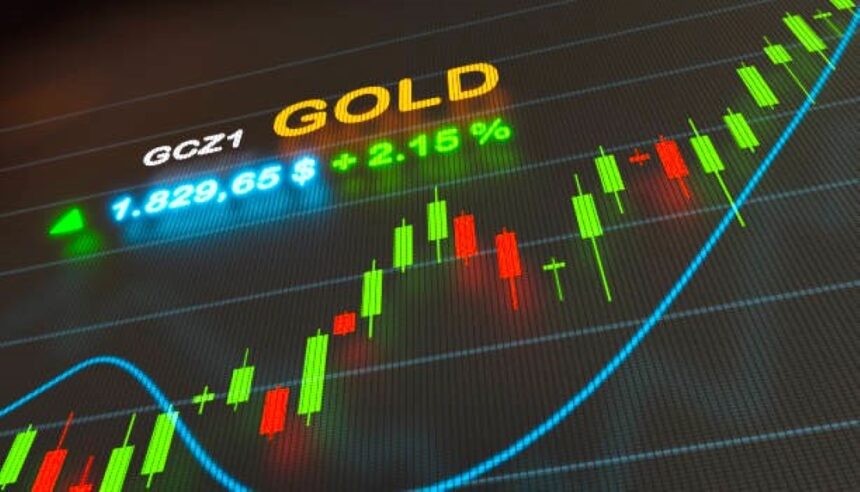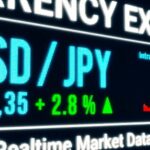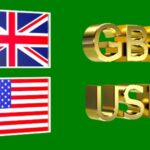Gold Surges to a Record $3,086: Will the Rally Continue?
Gold prices have hit another historic milestone, climbing to $3,086 per ounce before settling around $3,075 at the time of writing. This latest surge reflects a growing trend of investors flocking to safe-haven assets amid ongoing market turbulence. Equities and cryptocurrencies have been experiencing notable declines, pushing traders toward the stability of precious metals. With this momentum, the psychological barrier of $3,100 is now firmly in focus, as bullish sentiment continues to drive demand for gold.
Several macroeconomic and geopolitical factors are fueling this gold rally, ranging from concerns over inflation in the United States to escalating trade tensions under President Donald Trump’s administration. Investors are closely monitoring the US Personal Consumption Expenditures (PCE) data, which could provide crucial insights into the Federal Reserve’s next policy moves. Meanwhile, European inflation data has surprised to the downside, increasing the likelihood of further interest rate cuts by the European Central Bank (ECB). These dynamics are creating an environment where gold remains a preferred hedge against uncertainty.
Why Is Gold Rallying?
Gold’s recent surge is largely attributed to a combination of economic uncertainty, inflation fears, and shifting investor sentiment. The following key drivers are behind the rally:
1. Safe-Haven Demand Amid Market Volatility
With losses mounting in equity markets and cryptocurrencies, investors are seeking safer alternatives. Traditionally, gold has been a reliable store of value during periods of financial instability. The latest market downturn has triggered a flight to safety, with gold benefiting from renewed interest.
Cryptocurrencies, which have often been touted as digital gold, have struggled to maintain stability amid regulatory crackdowns and liquidity concerns. Similarly, stock markets have been rattled by uncertainty surrounding inflation, trade policies, and potential economic downturns. These factors are pushing investors to allocate more capital to gold as a hedge against volatility.
2. Inflation Concerns and the Role of US Tariffs
Inflation in the United States has been a major concern for policymakers and investors alike. The upcoming US PCE data is expected to show steady inflation figures, with both core and headline inflation projected to remain at 0.3% on a monthly basis. However, these figures might not fully capture the long-term inflationary pressures stemming from recent policy decisions.
One of the biggest sources of inflation uncertainty is President Trump’s tariff policies. His recent decision to implement a 25% tariff on auto imports, coupled with threats of further trade restrictions against the European Union (EU) and Canada, has raised concerns about rising consumer prices. Higher tariffs often lead to increased costs for businesses, which can then be passed on to consumers in the form of higher prices. If inflation continues to accelerate, the Federal Reserve may be forced to maintain a more hawkish stance on interest rates, further influencing gold prices.
Central Bank Policies and Interest Rate Expectations
Interest rates play a crucial role in determining gold’s attractiveness as an investment. When rates are high, fixed-income assets such as bonds become more appealing, reducing demand for non-yielding assets like gold. Conversely, when rates are low or expected to decline, gold becomes a more attractive store of value.
Recent inflation data from France and Spain suggests that the ECB might consider additional rate cuts to stimulate economic growth. France’s year-on-year Consumer Price Index (CPI) came in at 0.9%, defying expectations for an increase, while Spain’s inflation rate slowed significantly to 2.2%. This trend supports the case for looser monetary policy in the Eurozone, which could further bolster gold prices as investors seek alternatives to depreciating currencies.
4.Geopolitical Risks and Market Uncertainty
Geopolitical factors also play a crucial role in driving gold prices. Ongoing conflicts, trade tensions, and economic uncertainties often lead to increased demand for safe-haven assets. The Russia-Ukraine conflict remains a key risk factor, with any signs of escalation potentially boosting gold prices further. However, if a peace deal were to be reached, it could reduce geopolitical risk perceptions and lead to a pullback in gold prices.
Similarly, trade tensions between the US and its global partners remain a source of uncertainty. Trump’s aggressive trade policies have created significant market volatility, with investors closely watching how other nations respond. If trade tensions escalate further, gold could continue its upward trajectory.
Will Gold Sustain Its Rally?
The key question now is whether gold can maintain its current momentum or if a correction is on the horizon. Several factors will determine the future direction of gold prices:
US Economic Data: If inflation remains under control and the Federal Reserve signals a more accommodative stance, gold could face some downward pressure. However, if inflation continues to rise, it could reinforce the bullish case for XAU.
Geopolitical Developments: Any resolution to ongoing conflicts or trade disputes could lead to a decline in gold prices, while heightened tensions could push prices even higher.
Central Bank Actions: The ECB and Federal Reserve’s future monetary policy decisions will be critical. If rate cuts become more likely, gold could extend its gains.
Potential Scenarios for Gold’s Price Movement
1. Bullish Scenario: Gold Breaks $3,100 and Moves Higher
Continued market volatility and economic uncertainty drive further safe-haven demand.
Inflation concerns persist, leading investors to hedge with gold.
Central banks maintain dovish policies, making gold more attractive.
2. Neutral Scenario: Gold Consolidates Around $3,000-$3,100
Economic data comes in as expected, leading to a stabilization of market sentiment.
Investors await further clarity on interest rates and trade policies before making big moves.
3. Bearish Scenario: XAU Declines Below $3,000
Inflation fears ease, reducing the need for a hedge.
A geopolitical resolution, such as a peace deal in Ukraine, reduces risk premiums.
Strong economic data supports equities, leading to a shift away from gold.
Investor Strategies in the Current Market.
For investors looking to navigate the current gold market, here are some key considerations:
Long-Term Investors: Those with a long-term horizon may consider holding onto gold as a hedge against inflation and economic uncertainty. Given the ongoing macroeconomic risks, gold remains a valuable portfolio diversifier.
Short-Term Traders: Traders looking to capitalize on XAU price swings should closely monitor key economic data releases, central bank decisions, and geopolitical developments. Short-term volatility presents opportunities for tactical trading.
Diversification: While gold is a strong safe-haven asset, investors should maintain a diversified portfolio that includes a mix of assets such as equities, bonds, and commodities.
Conclusion
Gold’s rally to an all-time high of $3,086 underscores the current economic and market uncertainties driving investor demand for safe-haven assets. With inflation concerns, trade tensions, and central bank policies shaping market sentiment, gold remains a key asset in the current environment. The $3,100 level is now the next major resistance, and whether XAU sustains its upward momentum will depend on upcoming economic data and policy decisions.
While some analysts argue that gold is overvalued, its role as a hedge against inflation and market volatility cannot be ignored. Investors should closely watch the Federal Reserve’s stance on interest rates, geopolitical developments, and broader market trends to make informed decisions. Whether XAU continues its rally or experiences a pullback, it remains a crucial asset in today’s uncertain economic landscape.








